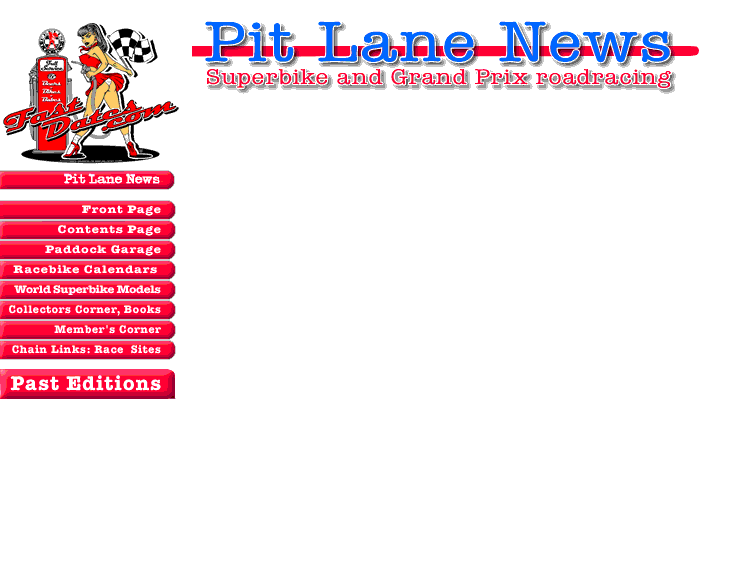|
|
|
|
|
Track Riding the new R1 Yamaha had chosen Qatar as the launch venue for the all new 2007 R1 Superbike. The Losail circuit has seen some fantastic race action over the last two seasons and famed for its hard-to-master, complex nature it’s a circuit that demands precision from both bike and rider – it would seem that Yamaha have plenty of confidence in their half of that equation – I just had to keep my half of the bargain. We head off out of a scorching pit lane and onto the kilometre long Losail straight. Mindful of the unscrubbed Pirelli Diablo Corsas, ease the bike into the first right-handerand follow Yamaha test rider, Jeffrey De Vries, studying his lines as he leads us out on the sighting lap, dictating the pace to the pursuant pack of journalists, all keen to let rip and find out just what Yamaha have done to their new sports bike. Unleashed and free to explore the bikes limits, it soon becomes apparent that many of the bike’s weaknesses have been addressed. The midrange power that by the standards set by Suzuki’s awesome GSX-R have been lacking appears to have been fixed for 2007 with far more shove from around 5,000rpm upwards. The motor feels far more flexible than before – a handy trait on a circuit as complex and technical as Losail. This is undoubtedly thanks to a revision of the cylinder head and a return to the use of four-valves-per-cylinder opposed to the trademark Yamaha 5-valve design. Yamaha's new Computer Controlled Intake (YCC-I) plays an important part too as the intake funnels alter in length to suit the engine RPM. There’s no feeling of it ‘cutting in’ as such, but there’s a tangible feeling of change in engine character as the inlet tracts shorten as the revs increase past 10,400rpm from 140mm to 65mm giving a boost to top end power. However, the most innovative piece of technology with the new Yamaha has to be the Computer Controlled Throttle (YCC-T) as first seen last year on the R6. And on the R1 it works a treat. The system makes a lot more sense on a bigger bike as it dampens down the delivery to the rear tyre. Initially the bike feels a little flat in the first third of the rev range, almost to the point of being gutless by comparison to the fierce delivery of the ZX-10R and the GSX-R. The communication between brain and right hand after years of winding on 1000cc throttles takes a while to adjust to the simple fact that the R1’s throttle can be wound on harder and earlier. The power is simply far more accessible thanks to the YCC-T. It’s almost as if the bike mimics a seven-fifty mid corner. Getting back on the gas from a trailing throttle mid-turn as you drag it back to the apex is far smoother than on the previous bike too making overall throttle control at full tilt a far less nervous affair. Some riders might see it as a rider aid that takes away the buzz of riding an angry animal of a bike, though these riders are unlikely to have ever suffered a bone-crunching highside – my opinion is that anything that affords a rider more traction and the confidence to open the throttle wide and leave it there without sacrificing any exit speed through either wheelspin or a lack of confidence has to be a good thing. Midrange isn’t the only area in which the Yamaha has improved. While it’s hard to say whether or not the top end power has been increased without a visit to the dyno, the way the power hangs on for longer all the way to the limiter is plainly apparent. Where the old bike would tail off just shy of the limiter, the new bike just keeps on pulling, emitting that trademark R1 howl from the twin titanium end cans. To any doubters out there who dismiss Yamaha’s trickery as gimmickry think again – the systems in place aren’t there to dumb down the thrill of riding a 180bhp motorcycle – they’re there to make it easier to go fast… very fast. |

See "Code" for Getting web stats.
Copy and paste.
Insert at the bottom of each page in code, just after <body>